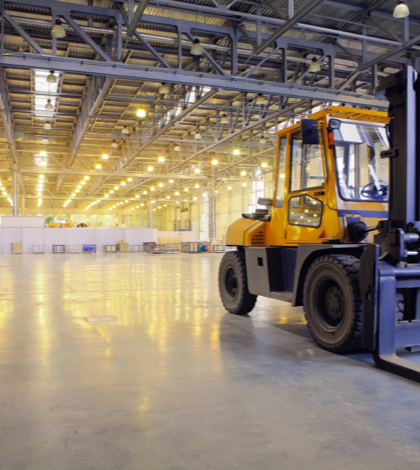Brokers say the market, which was outstanding in 2014, is showing no signs of letting up. Big-box projects will once again lead the way, but looking for smaller industrial buildings – 300,000 square feet and below – to pop up in both counties.
No one can argue that the Inland Empire’s industrial market didn’t perform spectacularly during 2014.
During the last 12 months, sales and leasing were strong, speculative development was the norm, vacancy declined and construction reached record heights.
Overall, about 30 million square feet of gross industrial space will have been absorbed in Riverside and San Bernardino during 2014, according to several industrial brokers familiar with the market.
At least one of those brokers believes the Inland region will perform about as well during 2015 as it did this year.
“I wouldn’t be surprised if we get to 25 million square feet in [gross] absorption next year, which would be a very strong year,” said Len Santoro, senior vice president with CBRE Group Inc. and a veteran industrial broker in the Inland region. “So my prediction for the industrial market is not as good as 2014, but close.”
The Inland industrial market performed solidly all year, as it shifted back to a where it was before the recession hit: a landlord’s market, driven primarily by logistics projects 500,000 square feet and larger, the so-called “big-box” sector.
One such project, a 1.4 million square foot build-to-suit development in Chino, began construction during the third quarter and is expected to be ready for occupancy, by Walmart, by the end of 2015.
In August, amazon.com opened its 1.2 million-square-foot fulfillment center in Moreno Valley, the Seattle-based company’s third in the Inland Empire. Fulfillment centers are designed to process and deliver internet orders the day they’re placed.
“They’re going to major drivers in the industrial market,” Santoro said. “The one thing you can say for sure is that the larger projects, 500,000 square feet and up, will continue to dominate the market.”
In the third quarter, 10 projects that combined covered 4.3 million square feet were finished, according to Colliers International’s Ontario office.
At the end of the quarter, nearly 12 million square feet of industrial space was under construction in the Inland region, with about 3.6 million square feet of that pre-leased. Eleven buildings in the big-box category were either completed or under construction during the third quarter, with about 60 percent of that pre-leased, according to Colliers.
“There’s no question the larger projects are driving the market, and there’s no reason to think that trend won’t continue in 2015,” Santoro said.
The Inland Empire recorded more than three million square feet of positive net absorption in industrial space during the third quarter, the 20th consecutive month of positive net absorption in the two-county region, according to Colliers.
Vacancy was essentially unchanged during the third quarter: 4.9 percent, down from 5.1 percent during the third quarter of 2013, Colliers found.
“There is continuing demand for newer, more efficient [industrial] buildings,” John Hollingsworth, Colliers’ executive managing director, said in a statement. “The market fundamentals continue to be solid.”
Possibly five or six transactions of 500,000 square feet or more are expected to be completed in the Inland region by the end of the year, Hollingsworth added.
There’s no reason to believe those positive trends won’t continue – and maybe even improve – during 2014, said Stephen Batcheller, president of NAIOP Inland Empire and a partner with Panattoni Development in Newport Beach.
“We’re going to have a lot of construction, maybe a little less than we had in 2014, but still robust,” Batcheller said. “As long as the economy stays up the Inland Empire will have construction, because it has so much available land. No other market in Southern California has as much open space as the Inland Empire.”
Batcheller predicted that the Inland industrial market will remain solid for the next 12 to 24 months, with most construction happening on the east end, specifically Riverside and Moreno Valley.
“More and more the west end is built out,” Batcheller said. “Even the area around [Ontario International Airport] is running out of space.”
Batcheller predicted an increase in industrial lease renewals in the two-county region next year, and more industrial buildings in the 100,000 square feet range being built.
“It’s gone away recently, but I really expect to see that market, the smaller industrial buildings, heat up,” Batcheller said.
Lease rates, which were relatively stable last year, are likely to rise no more than three to four percent during 2015, Santoro said.
“I don’t see them going up much more than that, and I don’t think any increase will favor the east or the west side,” Santoro said. “I also don’t see any hot submarkets, unless you count the Interstate 10 corridor on the east end as a submarket. The whole market is hot right now.”
Chuck Belden, executive director with Cushman Wakefield Ontario and a longtime industrial broker in the region, said he expects to see more construction and absorption in the Inland market during 2015.
“Overall, I think the outlook is pretty strong,” Belden said. “The economy is growing, and as long as that continues we should be OK.“
The ongoing labor dispute at the ports of Los Angeles and Long Beach, which has already caused the movement of goods to slow down at both locations, is the one possible cloud on the horizon heading into 2015, Belden said.
That dispute, which centers on wages and working conditions, has been put on hold temporarily, but a final agreement has not been reached. Any port slowdown could be disastrous for the Inland region, which relies so heavily on goods moving in and out of both operations.
“I think we’re all watching that closely,” Belden said. “I just hope both sides realize they have to settle this thing, that neither one of them can afford to be too belligerent. They both have to realize how much is at stake.”
 IE Business Daily Business news for the Inland Empire.
IE Business Daily Business news for the Inland Empire.


